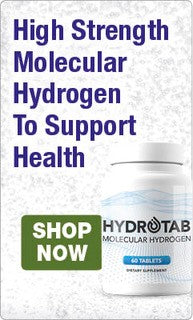If the Strathspey water dispute illustrates anything, it’s that water filters very much have their place.
Those new to the industry, however, will be understandably unsure which filter to invest their money in.
Indeed, the majority are likely to go the least eco-friendly route and buy bottled water rather than drink from the mains supply.
But which water filter gives the best water? And is reverse osmosis water all it’s cracked up to be?
Purified Water: Distillation or Reverse Osmosis
Few will need to be educated on the benefits of water: water plays a key role in cell performance and energy production, among other things. With that being said, many individuals fail to get into the habit of drinking enough, preferring to glug fizzy juice, tea or coffee throughout the day.
People simply don’t appreciate that dehydration negatively impacts the body’s natural healing ability, as well as our energy levels.
There are two primary methods of water filtration: distillation or reverse osmosis. Both systems filter the water by removing harmful substances – though naturally there are degrees of success depending on the quality and cost of the filter used.
After all, there are many potential contaminants lurking in tap water nowadays, from chlorine, heavy metals and allergens to fluoride, parasites and oestradiol. Filters have their work cut out for them!
Drinking purified water is plainly a logical choice, but the problem with water produced by distillation or reverse osmosis is that it is devoid of essential minerals. In fact, the reverse osmosis process eliminates between 92 and 99% of beneficial magnesium and calcium!
So while these expensive systems remove a good number of chemicals and contaminants (and let’s be honest, that’s the job they’re advertised as doing), the water they generate is – in a sense – lifeless.
Living Water vs Dead Water
According to Dr. Batmanghelidj, “You are not what you eat; you are what you drink.” The idea that our health is dependent on water is not a new one, but the concept of water quality has always been somewhat novel. Even today, with more choice than ever, many remain uninformed about what constitutes good healthy water.
As stated, so-called dead water lacks energetics – trace minerals – as a consequence of the ostensibly advantageous filtration process. Without these desirable minerals, the water is left slightly acidic, typically in the range of 6.0 to 6.75 on the pH scale (although it can be even lower).
One suspects that reverse osmosis water would be less popular if it were advertised as demineralised acidic water, rather than clean, contaminant-free H20! It’s all about perspective.
The benefits of magnesium-rich, high-calcium water have been extolled by as impartial a source as the World Health Organisation, who published a lengthy report on the health risks associated with regularly drinking demineralised water.
The WHO cited Czech and Slovak populations who used home RO systems as showing “signs of acute magnesium (and possibly calcium) deficiency” as well as “cardiovascular disorders, tiredness, weakness or muscular cramps.”
Plentiful minerals imbue water with its necessary life energy, making the terminology of “dead water vs living water” rather apt. Pure living water is the type that is free of impurities while rich in minerals. Clean-tasting filtered water that goes beyond hydrating and both mineralises and alkalises the body.
Sourcing Living Water
Eliminating harmful chemicals from your water is clearly a must, but that does not mean it is the best water to drink. If one were to formulate an equation to describe healthful water, the part about removing contaminants would constitute only a part of it.
The choices are extensive, from carbon filters and fluoride reduction cartridges to structured water units. Some even recommend manually adding organic plant minerals to RO water before drinking it.
In our view, the simplest thing to do is install a filter which removes contaminants, remineralises the water and heightens the pH. This will give you clean, energised water with a good natural structure. Water that by its very nature is designed to hydrate and detoxify.
The Energy Plus Water Filter is a four-stage system capable of removing physical contaminants and infusing water with beneficial minerals. Tested by the University of Edinburgh’s Engineering Department, the system elevates the pH of drinking water to between 8.5 and 9.5, well into the alkaline range. The water even has antioxidant properties thanks to the advanced bioceramic mineral balls used in the third filter cartridge.
While the filters used in the Energy Plus must be replaced on an annual basis, it’s a small price to pay for a continual supply of healthy living water.
If you’ve already invested in a quality reverse osmosis system, don’t fret: you can still enjoy the benefits of living water. All you need to do is remineralise the water which exits your current system.
If you wish to also elevate the pH, the Biocera Alkalising Teabags are a good choice: simply add to your purified water and its advanced bioceramics will release calcium, magnesium and potassium in the process of alkalising the water.
Yet another option is to use an alkaline inline filter cartridge, such as this one. In essence, it adds an extra stage to your current filtration process, changing the water’s Oxidation Reduction Potential, adding in beneficial minerals and increasing the pH to the same range as offered by the Energy Plus.
Adding the inline cartridge means you’ll benefit from your reverse osmosis system’s contaminant removal function; without missing out on minerals or having to drink acidic water.
Prioritise Hydration
Whichever method you choose – and this is by no means an exhaustive list – the benefits of drinking living water are obvious.
Of course, in order to enjoy them you’ll need to make a conscious effort to prioritise hydration by limiting your intake of coffee, tea, energy drinks and other dehydrating beverages.
When thirsty, water should be your first port of call!




























Leave a comment